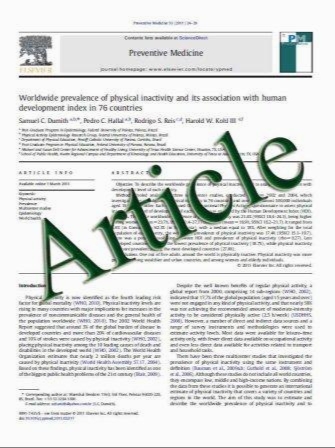Pancreato-Biliary Malignancy Diagnosed by Endoscopic Ultrasonography in Absence of a Mass Lesion on Transabdominal Imaging: Prevalence and Predictors
- نوع فایل : کتاب
- زبان : انگلیسی
- مؤلف : Savio C. Reddymasu Neil Gupta Shailender Singh Melissa Oropeza-Vail Syed Faisal Jafri Mojtaba Olyaee
- چاپ و سال / کشور: 2010
Description
Background and Aims Pancreatic adenocarcinoma is the fourth leading cause of cancer-related death in the United States. Pancreatic cancer is diagnosed in some patients by endoscopic ultrasonography (EUS) even in the absence of an obvious mass lesion on transabdominal imaging studies. The purpose of this study was to estimate the prevalence of PBM on EUS-FNA in patients with no obvious mass on transabdominal imaging and identify possible predictors of PBM in this cohort of patients. Methods Three hundred and twenty-six patients (219 female; mean age: 57) with no obvious neoplastic lesion on trans-abdominal imaging underwent EUS. Demographic data, indication of EUS, history of weight loss, smoking, alcohol use, diabetes, cholecystectomy status, CT and USG findings, and liver function tests (LFTs) were reviewed. Results Thirty patients (9%) were diagnosed with a PBM by EUS-FNA (27 pancreatic adenocarcinoma, three ampullary adenocarcinoma). The mean age of patients diagnosed with PBM was significantly (P\0.01) higher than controls. The mean size of the tumor was 2.8 cm (range: 0.9–7 cm). Male gender, presence of jaundice, abnormal LFTs, weight loss, and nonspecific transabdominal imaging results such as dilated common bile duct (CBD), and abnormal appearing pancreas predicted the presence (P\0.05) of PBM, whereas patients with previous cholecystectomy and abdominal pain were less likely to have this diagnosis. Conclusions Normal trans-abdominal imaging does not completely exclude the presence of PBM. Nonspecific pancreatic abnormalities and CBD dilation on transabdominal imaging, with jaundice, abnormal LFTs, weight loss, and lack of abdominal pain are predictors of PBM.
Dig Dis Sci (2011) 56:1912–1916 DOI 10.1007/s10620-010-1511-z Received: 12 August 2010 / Accepted: 19 November 2010 / Published online: 28 December 2010


